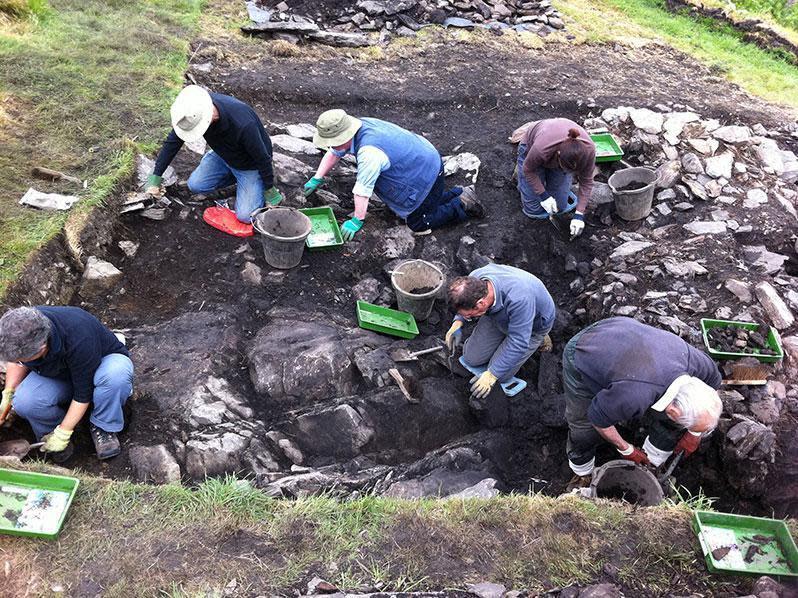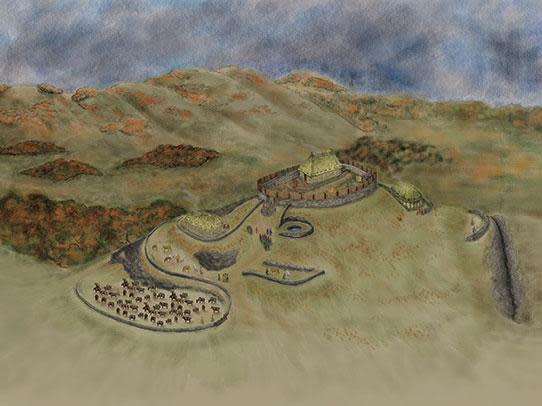Lost Dark Age kingdom hidden for 1,400 years discovered in Scotland

A long lost kingdom dating from the Dark Ages is thought to have been discovered in Scotland, archaeologists have said.
The site at Trusty's Hill in Galloway was known to be a centre of Pictish culture.
But further excavation has revealed that it "was a place of religious, cultural and political innovation whose contribution to culture in Scotland has perhaps not been given due recognition," according to the dig's co-director, Dr David Bowles.
Researchers now believe the site could have been the ancient Kingdom of Rheged's seat of power, although this is yet to be confirmed.
The kingdom is said to have been ruled by King Urien, who appears in Arthurian legends.
In some of the ancient stories he marries King Arthur's sister Morgan le Fay, although their marriage is not portrayed as a happy one. In one legend, Morgan plots to take the sword Excalibur, kill Urien and Arthur, and place herself and her lover Accolon on the throne.
Despite its historical importance, the Kingdom's location has been unknown since medieval times. It was previously thought to have been in Cumbria.
Excavation at the current site began in 2012, but a book on the site, The Lost Dark Age Kingdom of Rheged, was released this month by Dr Bowles and his fellow archaeologist, Ronan Toolis.

“Trusty’s Hill was likely the royal seat of Rheged, a kingdom that had Galloway as its heartland,” said Dr Bowles, a Scottish Borders Council archaeologist.
“This was a place of religious, cultural and political innovation whose contribution to culture in Scotland has perhaps not been given due recognition. Yet the influence of Rheged, with Trusty’s Hill at its secular heart … and Urien its most famous king, has nevertheless rippled through the history and literature of Scotland and beyond.”
An excavation of the site found Trusty’s Hill was a complex type of fort, dating to 600AD, with a layout consistent with a settlement of high status during that period of history.
“The people living at Trusty’s Hill were not engaged in agriculture themselves," said Dr Bowles.
“Instead, this household's wealth relied on their control of farming, animal husbandry and the management of local natural resources - minerals and timber - from an estate probably spanning the wider landscape of the Fleet valley and estuary.
“Control was maintained by bonding the people of this land and the districts beyond to the royal household, by gifts, promises of protection and the bounties of raiding and warfare.”
Read more
Archaeologists discover 2,300-year-old sword that's still shiny
Lost Greek city dating back 2,500 years discovered by archaeologists
Iranian archaeologist uncovers what could be world's oldest etchings
Royal inauguration ceremonies are also believed to have taken place at the site, suggesting its inhabitants were at the top of the social hierarchy.
However, the settlement was destroyed by a rival group in the early seventh century.
The archaeologists were drawn to the site by ancient carvings on the bedrock.
But Mr Toolis said the meaning of the carvings will most likely never be known, because “there is no Pictish Rosetta Stone”.

 Yahoo News
Yahoo News 
